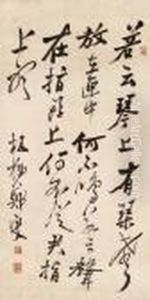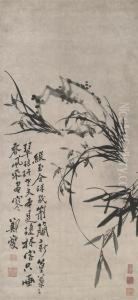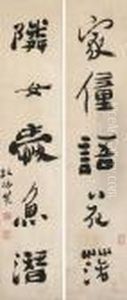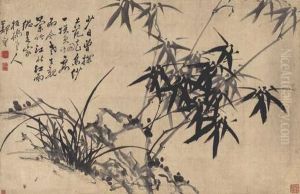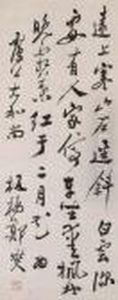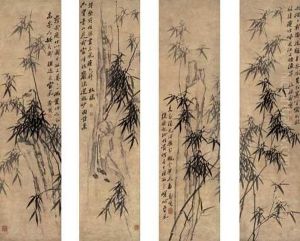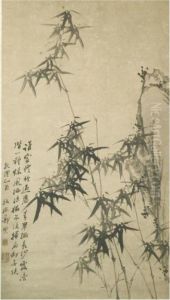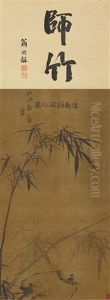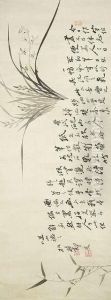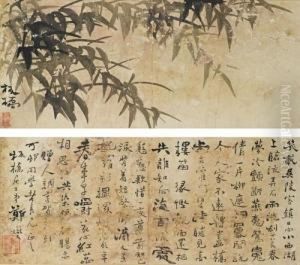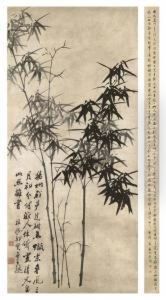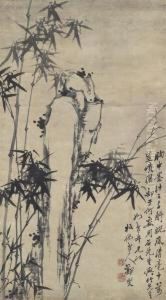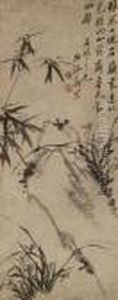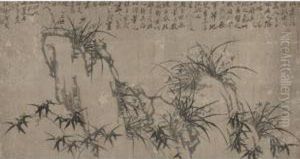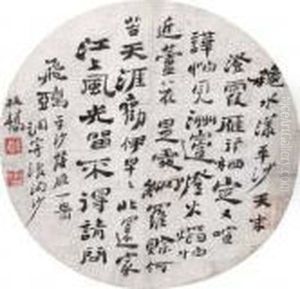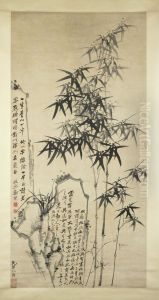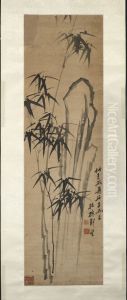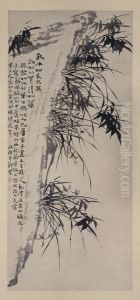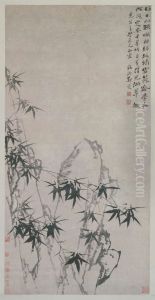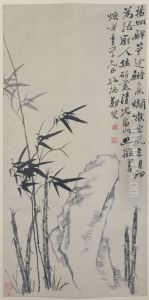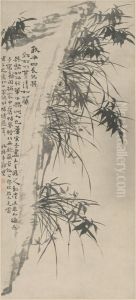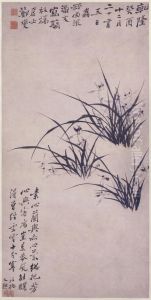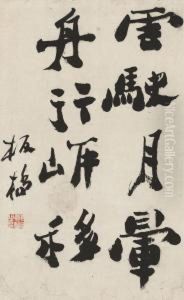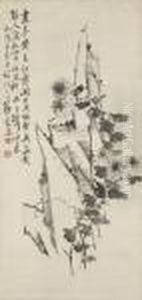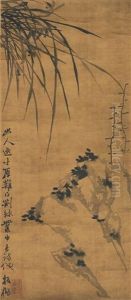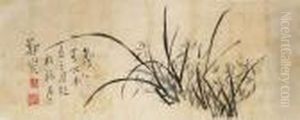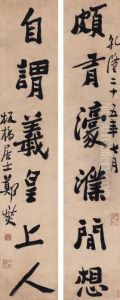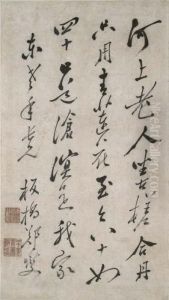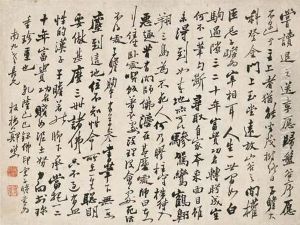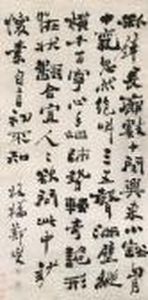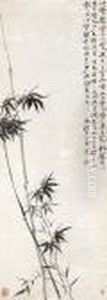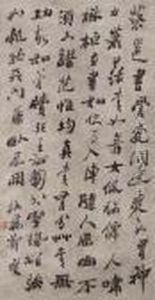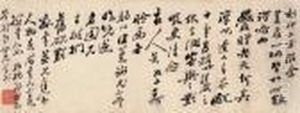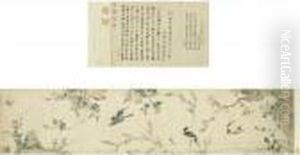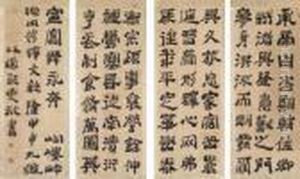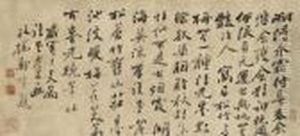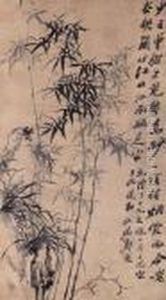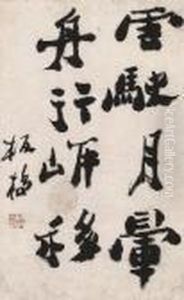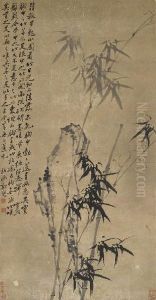Zheng Xie Paintings
Zheng Xie, often known as Zheng Banqiao, was a prominent Chinese painter of the Qing Dynasty, recognized for his poetic, calligraphic, and painting skills. Born in Jiangsu province, he initially pursued a career in civil service. However, dissatisfied with the bureaucracy and corruption he witnessed, Zheng eventually resigned from his official position to focus on art, literature, and teaching.
Zheng Xie is particularly renowned for his bamboo and orchid paintings, which are imbued with strong personal style and character. His bamboo stalks are typically rendered with vigorous, assertive brushstrokes, symbolizing resilience and integrity. The orchids, on the other hand, are depicted with a more delicate touch, conveying elegance and a sense of noble withdrawal from the sordid world.
Apart from his botanical subjects, Zheng's calligraphy is also highly esteemed. He was adept in various script styles, including the standard script (kaishu), running script (xingshu), and cursive script (caoshu). His calligraphic works often carried a sense of spontaneity and freedom, reflecting his philosophical outlook on life and art.
Zheng Xie was also a member of the 'Eight Eccentrics of Yangzhou,' a group of artists who were known for their unconventional style and rejection of the rigid techniques that dominated Chinese painting during their time. As an intellectual, his works frequently contained references to classical literature and expressed his ideals of simplicity and self-cultivation.
Throughout his life, Zheng Banqiao struggled with the tension between social responsibility and personal expression. His art became a means for him to critique society and to advocate for a life of honest poverty over one of corrupt wealth. His influence extends to modern times, where his works continue to be studied and admired for their spirited defiance and aesthetic originality.
